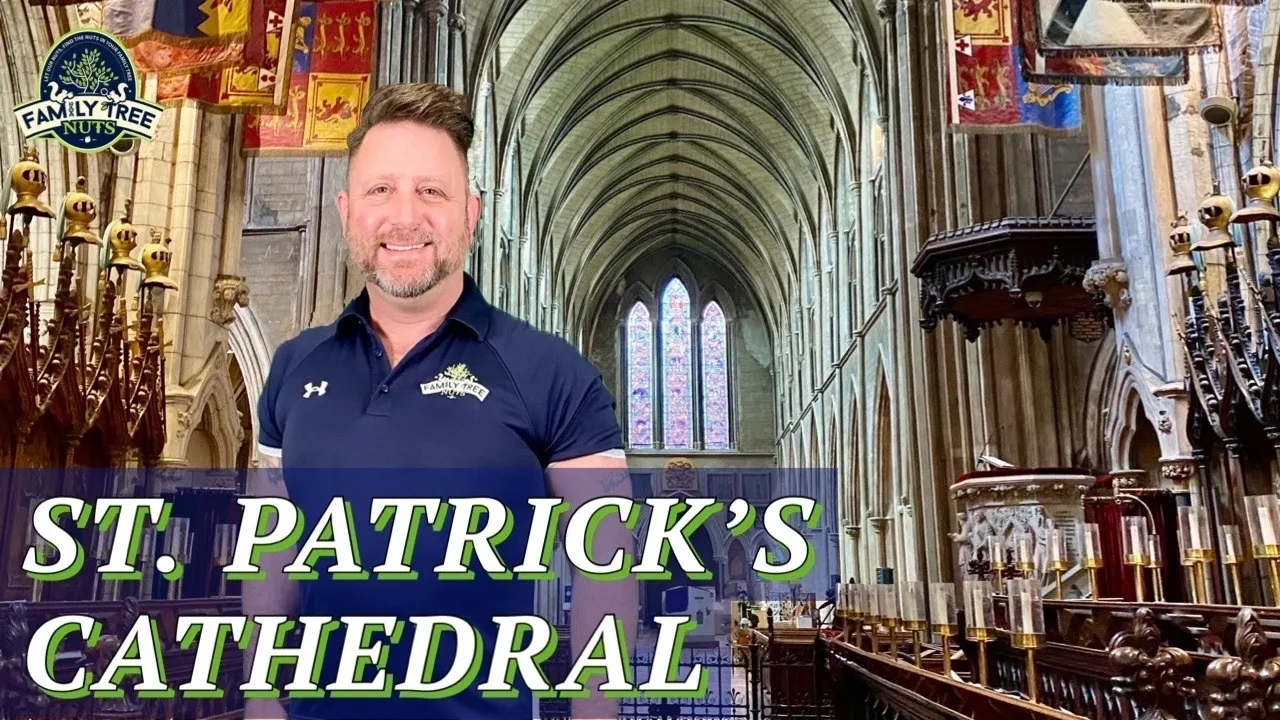
DUBLIN’S ST. PATRICK’S CATHEDRAL’S HISTORY

Have you ever felt that you were on Holy ground or without a doubt were in the presence of God Almighty? There are few places on earth that will make you feel more like that than Saint Patrick’s Cathedral, in Dublin, Ireland. They say that this is the very spot where around the year 450 AD, over 1,500 years ago, Saint Patrick himself baptized Irish converts. This 800-year-old cathedral had been declared the National Cathedral of Ireland. One visit and a little understanding of its history will leave you little doubt as to why. In this article we will tell you the story of this important ancient holy place and give you a tour, both inside in out. The beauty that you will see here is almost indescribable making one of Ireland’s most visited places.
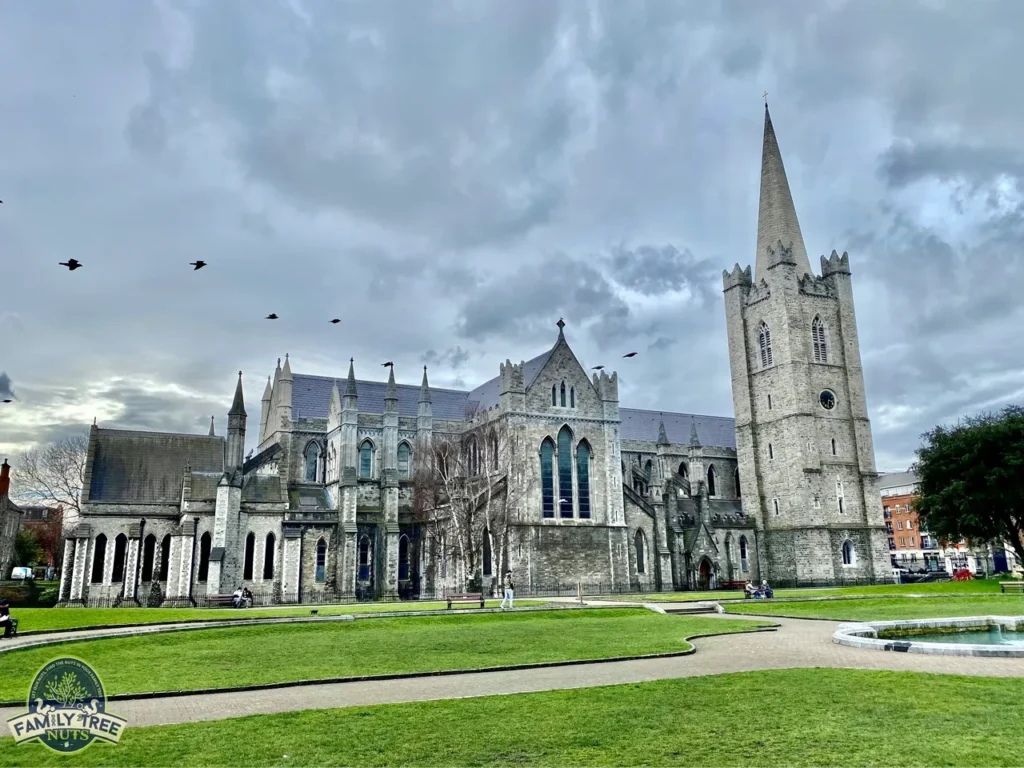
Recently we visited St. Patrick’s Cathedral and definitely wanted to share it with you. Millions of us trace our ancestry back to Ireland and when you visit places like this, you can feel it in your soul.
The story here begins with Saint Patrick himself, the beloved Patron Saint of Ireland. Many know that Patrick was born in Britain and at the age of sixteen was captured by Irish pirates and taken as a slave to Ireland. Patrick spent six years as a slave and during this time he worked as a shepherd and became deeply spiritual. Patrick escaped his master and returned home to Britain, and soon he began to study to be a priest. Eventually Patrick became convicted to bring the gospel to the pagans who had once held him captive and around the year 433, Patrick returned to Ireland.
For the rest of his life he preached the gospel, converted the population, baptized new Christians, and forever changed the country of Ireland. Tradition has always stated that at a spring just outside the modern cathedral was where Patrick held his many baptisms. During an excavation in the construction of the park in the early 1900s, a Christian slab was found capping a well and it is believed that it was to identify the exact spring. Several other similar grave slabs like this one were found nearby and they are all at least one thousand years old meaning that the area has likely had churches on this site possibly since the time of Saint Patrick. Patrick died on March 17th, 461 AD, which is why Saint Patrick’s Day is when it is.
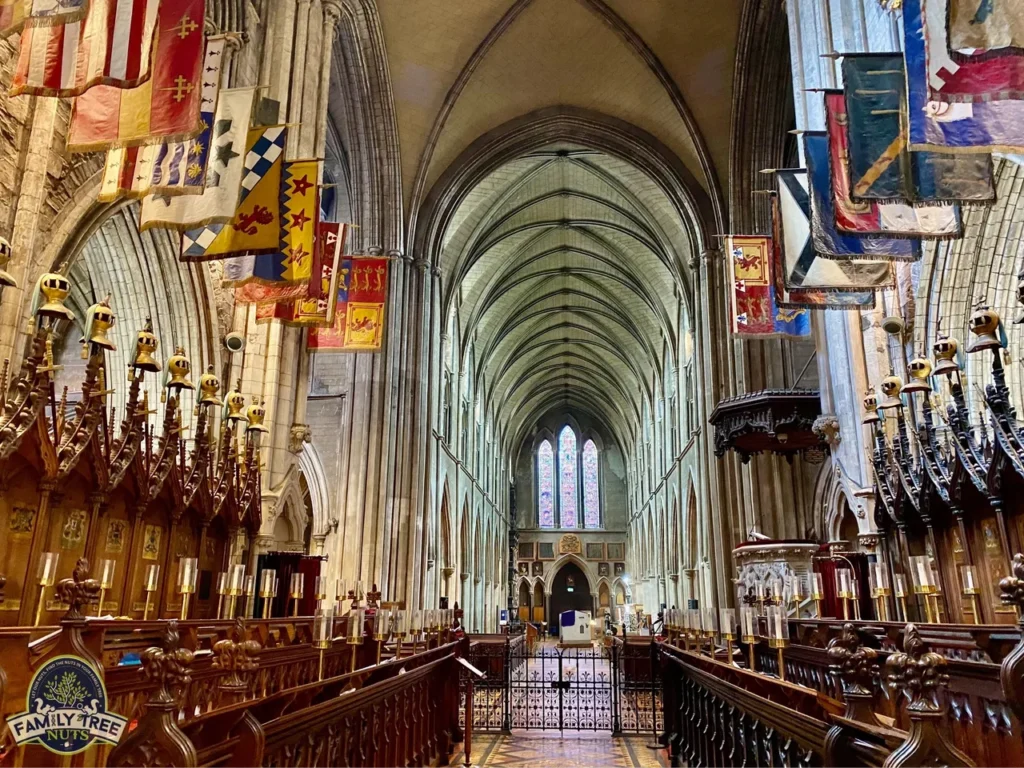
The first time a church was mentioned on the site was in the year 1178 and at that time it was on a spot of land surrounded by the River Poddle which today lies under the modern cathedral. Soon the Anglo-Normans arrived and with them there were many advancements. On Saint Patrick’s Day, March 17, 1191, the Archbishop of Dublin, John Comyn raised the status of St. Patrick’s from a parish church to a collegiate church that had a large body of priests and was dedicated to education. Between 1212 and 1223 the church was raised to the status of a cathedral. Then the current building that we see today was built between the years 1220 and 1260. The Archbishop Luke was in charge of the construction but ironically, he went blind before its completion and he was never able to see the cathedrals full majesty.
The cathedral has been added to, remodeled and changed several times in its 800-year history. The bell tower was originally built in the fourteenth century but was destroyed by a storm. It was destroyed again by fire and built a third time and has the name, Minot Tower after the archbishop who served during its construction. In the mid 1800s the cathedral had fallen into a terrible state and it was even estimated that it would be less expensive to demolish the building and rebuilt it. The sacred site was saved by a generous benefactor, Sir Benjamin Lee Guinness, the heir of the Guinness beer brewing empire. Guinness was a member of the congregation and offered to fund the renovations as long as he had a free reign to do as he pleased and was not questioned on his decisions or methods. His offer was accepted and from 1860-1865 the cathedral was drastically remodeled. The changes that Guinness had made were highly controversial and created tension with some church members, but as agreed upon, Guinness continued with his plans without interference. Guinness opened the ceiling and took out the rafters, put in the stained-glass windows, added the medieval style floor tiles modeled after the ancient ones that had survived in the baptistry, opened the rooms into one open area and took away the screens that separated the alter area from the congregation. When the renovations were finally completed there was a tremendous celebration and festivities. Guinness asked for no recognition for his deeds put eventually a statue was added outside by the grateful church in honor of their most generous benefactor.
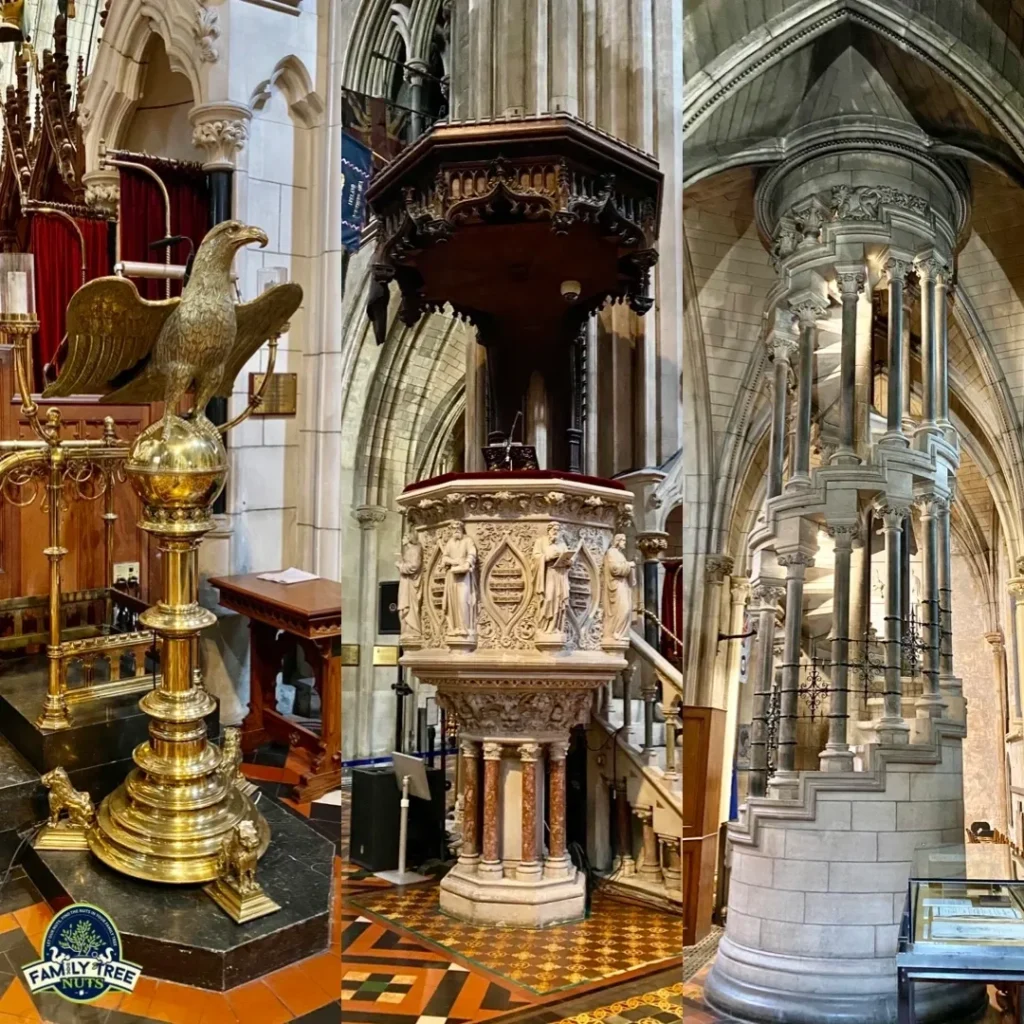
Over the centuries the cathedral has followed the history of Ireland itself by switching back and forth between catholic and protestant. It currently is part of The Church of Ireland, which is Anglican and protestant. The first university in Ireland was founded here in the year 1311, and Ireland’s first school was founded here in 1432, for the education of the choirboys. Ireland’s oldest secondary school was founded in 1547, as the Saint Patrick’s Cathedral Grammar School. Also, in 1701, the first public library was founded by Archbishop Narcissus Marsh and is called, Marsh’s Library.
Over the centuries, one of the challenges of St. Patrick’s Cathedral was its close proximity to Christ Church Cathedral which is only about one-third of a mile away. When the churches were built, Christ Church was inside the city walls and fell under the city’s jurisdiction, but Saint Patrick’s was outside the city walls and did not fall under the city’s hand. Like Saint Patrick’s, Christ Church Cathedral, changed its denomination over the centuries, but is currently part of the Church of Ireland, or protestant denomination. Both cathedrals are extremely important to Dublin and to Ireland. While Saint Patrick’s Cathedral has been declared the National Cathedral of the Church of Ireland, Christ Church Cathedral had been declared the Diocesan Cathedral for Dublin and Glendalough.
Now that we discussed some basic history of Saint Patrick’s Cathedral, let’s begin our tour! We enter from the south porch and if we look to the right we can see the statue of Sir Benjamin Lee Guinness. As we enter we pay our small fee and can begin our self-guided tour. Be sure to notice the room on the left, that is the baptistry. This room has been blessed to have its original tiles, those tiles were the inspiration for the tiles that were added throughout the cathedral in the 1860s. As you enter the nave, or main part of the cathedral, you will see the gift shop to your left, and straight in front of you is the ancient stone that is said to have been the cap of Saint Patrick’s Well. Anyone with Irish ancestry should get a little chill seeing this ancient stone.
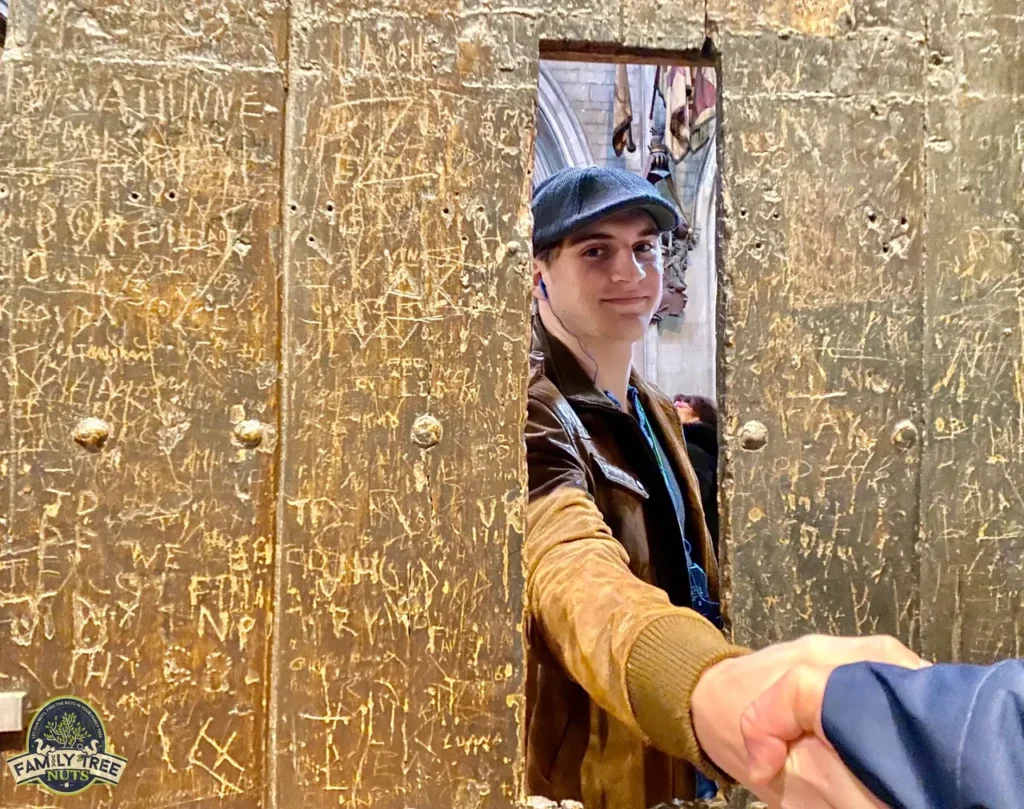
If you look to your left, the west wall which faces the road, and above the gift shop area, you will see the beautiful stained-glass window that displays the 39 episodes of Saint Patrick’s life. The left side shows events in his early life, the right side shows his return home from slavery and training as a priest, and the center shows his missionary work to convert the pagans in Ireland. Near here is the entrance to the bell tower and the restrooms.
You are free to wander the cathedral as you choose but you will notice that the main shape of the building is that of a cross. This is quite common with medieval churches all over the world. Notice the exquisite tiles and the sheer size of this magnificent holy place. All along the outer wall you will see memorials and tombs of prominent citizens over the centuries. It is estimated that between 600 to 700 people are buried inside, or around the cathedral.
The largest monument in the cathedral is the Boyle Monument which was built in 1632, by the first Earl of Cork Richard Boyle, in honor of his wife Katherine. It displays four generations of her family with the top being Katherine’s grandfather Robert Weston, who was a dean of the cathedral and Lord Chancellor of Ireland. The small child is said to be Richard and Katherine’s son Robert, who developed the scientific breakthrough called “Boyle’s Law” and is often referred to as the father of modern chemistry.
As you move to the front of the cathedral you will see a display holding a medieval door with a hole cut in the middle of it. This door is called “The Door of Reconciliation” and has an exciting story. In 1492, the Butlers of Ormonde and the Fitzgerald’s of Kildare were in a fierce feud which turned into a battle. Facing defeat, the Butlers retreated and entered Saint Patrick’s Cathedral and claimed sanctuary. The Fitzgerald’s pursued the Butlers and found them hiding in the chapter room. The two families argued and negotiated for hours, shouting through the door. The Fitzgerald’s suggested a truce and were willing to let the Butlers return home, but the Butlers felt that it was a trick and remained in their fortified room. The leader of the Fitzgerald’s, Gerald Fitzgerald wanted to prove that it wasn’t a trick and cut a hole in the door. He then stuck his arm in the hole and gave the Butler’s two options, they could cut off his arm, or shake his hand in peace. The Butler’s shook his hand and the conflict was ended. This story is where the Irish phrase “to chance your arm”, comes from, which simply means, to take a chance or a risk.
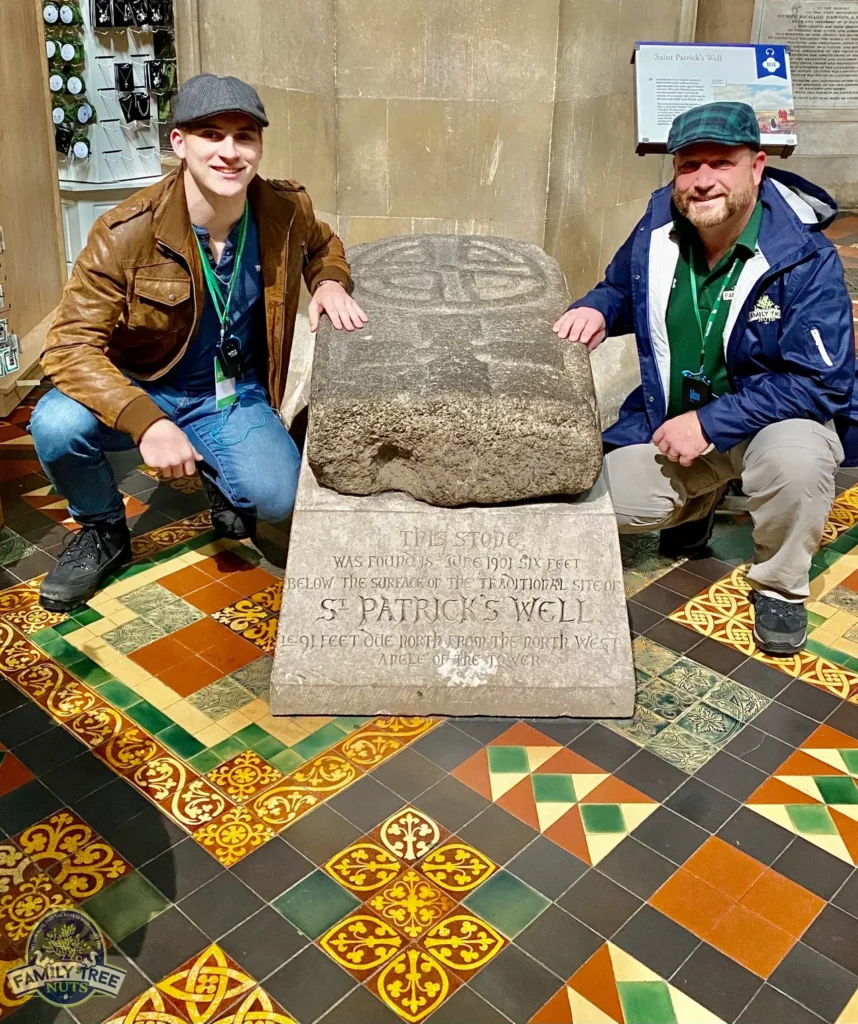
As you move into the north transept, or right arm of the cross shape, you will see many items relating to military history. Irish military unit colors of disbanded units are hanging here, deteriorating in accordance to military tradition. Here we also see the carved stone spiral staircase that leads to the organ loft which contains four thousand pipes.
In between the north and the south transept is the area called the Chancel area which holds the pulpit, lectern, alter, and the choir area. The pulpit is on the left side and made of carved stone. It was added in the mid 1800s by Henry Pakenham, who was the dean of the cathedral who oversaw most of the restorations. The lectern is brass with an eagle sitting upon a globe that symbolizes the Word of God spreading throughout the world. The alter sits in the back of here behind the choir, in a place of prominence that overlooks the congregation. This area is often off limits, but with special permission one can enter into the alter area.
One of the most unique areas of the cathedral is the choir stalls which are in between the pulpit and the alter. The choir was formed in 1432 and performs at most services. Above the stalls are the flags of The Knights of Saint Patrick and the helmets and swords worn during ceremonies. The Knights of Saint Patrick are an honorary British chivalry organization that was founded in 1783, by King George III. To put that date into perspective, this is the same year that the Revolutionary War ended in the United States. One of the largest ceremonies in the Cathedral happen in 1869, when Edward, the Prince of Wales was inducted into the order. Edward later became King Edward VII. The order functionally ceased to exist in 1922, when Ireland won its independence.
Next up is the east transept, or the very front of the cathedral. Here we have “The Lady Chapel” which was the first addition to the cathedral in 1270. At that time, it was called the “French Chapel” because it was used by French Huguenot refugees. The last area to cover inside the cathedral is the south transept, or the left arm of the cross. Here there are several tombs of archbishops, including the most famous, Jonathan Swift. Swift was dedicated to education and was an author who penned many works, such as the classic book, “Gulliver’s Travels”. Also, in the west transept is two statues of Saint Patrick, one of which very little is known about, except that parts have been taken from three other statues to form this one. The head was taken from a statue from the seventeenth century, the body was taken from a statue of an archbishop from the thirteenth century, and the base was taken from a pulpit from the nineteenth century.
This brings us to the end of the inside tour of the cathedral and now it’s time to explore the outside, but before you leave, I highly encourage you to say a little prayer, or at least bow your head in reverence. Once we exit outside be sure to take in the exquisite gothic architecture of the cathedral. Take time to really enjoy the beauty, the history, the legacy, and the stories that millions have done before you. You are looking at the same sights that knights, lords, peasants, kings, and simple farmers have taken in for the last 800 years. That is difficult for many Americans to fathom when we are impressed with something that is only 200 years old. Don’t forget to see the amazing cemetery with Celtic crosses that lies on the south side.
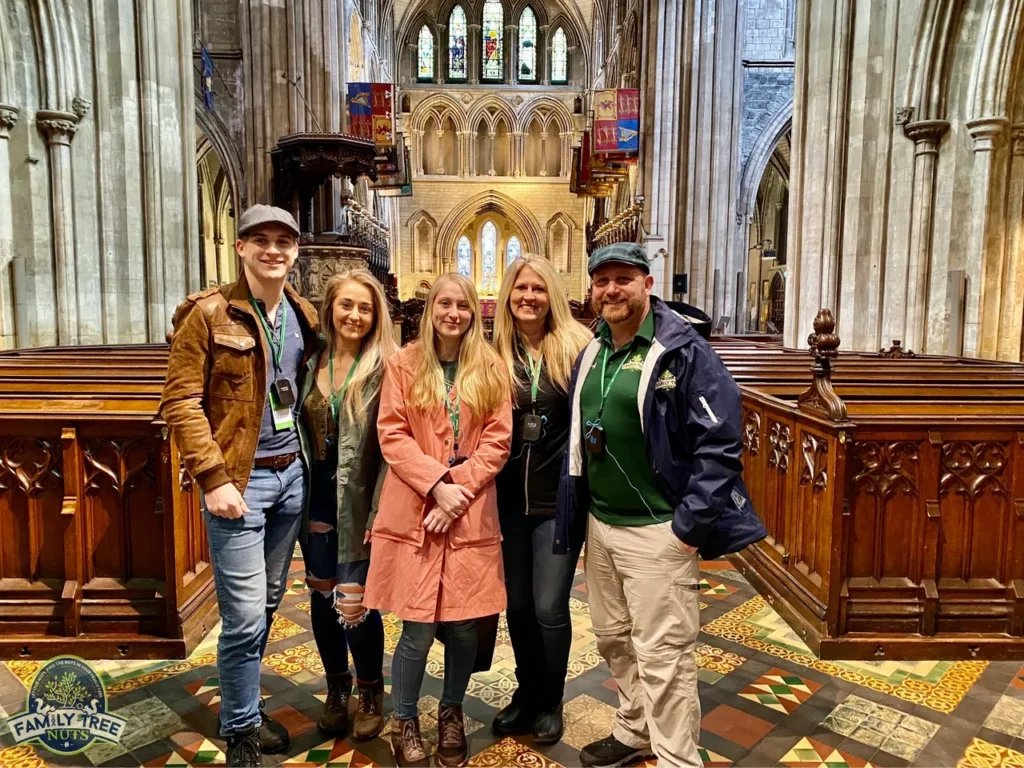
On the north side of the cathedral is Saint Patrick’s Park which began construction in 1897 and was completed in 1904. It was opened on July 24, 1902 by King Edward VII and it’s said that he was very satisfied with its layout. Remember what we mentioned earlier about Saint Patrick and the spring where he baptized the Irish; the park is believed to be the location of that well. The stone was found near the entrance during the construction of the park. The park also has benches, a playground, and a couple of gorgeous fountains. One section in the front is dedicated to the lost lives of children in the 1916 Easter Rising event. The inscription is in Irish and translates to, “A Play Garden in Memory of the Children Lost in 1916”.
In the rear of the park, is the Literary Parade that was built in 1988, the 1,000th anniversary of the City of Dublin. Civilization had existed on the site of Dublin since the time of Christ but the Vikings established the city that we now know. The Gaelic conquest of Dublin was in the year 988, and the establishment of The Kingdom of Dublin, making that year the accepted birth year of the modern city. To celebrate the millennium, the Literary Parade was built. Along the wall are the shrines of twelves literary giants from Dublin, each of them having had an impact on the world. When you have finished your journey on the grounds of the park, don’t forget to visit the little café in the back corner for refreshments.
This concludes our adventure of exploring the history and the site of Saint Patrick’s Cathedral. It is estimated that around 400,000 visitors travel here each year and their entry fees and small donations are what keeps the daily preservation up to date. Be sure to see the video from here at the link below.
– Col. Russ Carson, Jr., Founder, Family Tree Nuts
